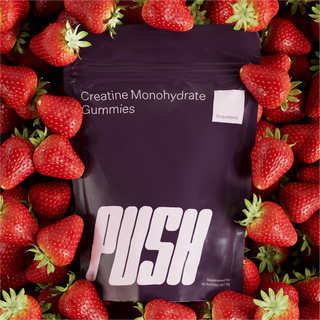Recently, we wrote a blog about the recommended amount of exercise for adults and how exceeding that can have incredible, life-long benefits for your health. If you need a refresher, the Australian government recommends 2.5 to 5 hours of moderate intensity physical activity or 1.25 to 2.5 hours of vigorous intensity physical activity each week. We covered numerous ways to incorporate extra exercise into your routine, and in today’s blog we have another time-saving gem for you to consider: HIIT!
What is HIIT?
HIIT stands for High Intensity Interval Training, and has rapidly grown in popularity over the last few years. It was originally called ‘Sprint Interval Training,’ and was introduced in the 1950s primarily for Olympic athletes to reach their 100% maximum heart rate and improve their performance (i). Since then, the exercise form has evolved, now involving several rounds that alternate between periods of intense exercise and periods of rest or low-intensity movement, ultimately reaching at least 80% maximum heart rate.
There are various ways to execute a HIIT workout, such as circuit training where you rotate through 8-12 exercises, and Tabata, which alternates between longer periods of extreme intense movement and short rest intervals. The great thing about HIIT is that it can be done with or without equipment, and can be incorporated into other forms of exercise. For example, you can build a HIIT workout for running (outside or on a treadmill), stair climbers, dancing and more! At Aleenta Health Club, these styles have been implemented both in-studio and online! If you’ve got a jam-packed schedule and are interested in adding quicker, HIIT workouts to your weekly fitness routine, check out some of the HIIT classes on our YouTube channel.
How does HIIT work and why is it so effective?
The intense movement or exercise intervals involved in HIIT target your aerobic fitness. It causes your heart rate and blood flow to increase, requiring more oxygen uptake, which is often why you breathe heavier during a high-impact workout. Of course, MICT does this as well, but at a lower rate. The difference is that following each rest period in HIIT, your cardiovascular system and muscles are challenged to work a little harder, gradually building endurance in these areas. The overall impact of HIIT and MICT has been extensively researched and compared over several decades, and whilst MICT is in no way ineffective or bad for you, HIIT provides greater results in a shorter amount of time. According to professor Ulrik Wisloff who has been studying HIIT for over 20 years:
“A higher VO2max” – your maximum oxygen uptake – “is strongly associated with greater longevity, suggesting intervals are likely to have a more potent influence on our life spans than, for instance, gentle walks.”(ii)
HIIT has been shown to decrease body fat, increase strength and endurance, and improve overall health outcomes in a shorter timespan than other, longer forms of exercise.

A 2006 study had two groups of college students pedal stationary bicycles for two weeks: one group at a less frequent, but longer and moderate rate, and the other in more frequent, higher intensity, 30-second intervals. While the study showed that both groups found great health improvements, the moderate group did so with a total of 12 hours of exercise, whilst the HIIT group found similar results with a total of just 12 minutes! (iii)
Several studies have also found that HIIT boasts additional benefits for cardiovascular disease (iv), hypertension (v) and pulmonary disease (vi).
How much time can you save with HIIT?
A 2021 study on low-volume HIIT found that a session less than 20 minutes long yields the same results as the exercise recommendations posed by the World Health Organization and the Australian Government alike (vii). In fact, a previous study by the same researcher showed that as little as 4 minutes of HIIT 3 times per week for 12 weeks significantly improved blood sugar levels, fat in the liver, and cardiorespiratory fitness in adults with type 2 diabetes. (viii)
So, if you read our last article and thought ‘I don’t have time to add extra flights of stairs or change my mode of transport,’ we totally get you. Why not try swapping out a few of your regular, 50-minute classes for a quick HIIT sesh? Courtney’s Ain’t Nobody Got Time For That series will have your heart pumping and blood flowing in just 15 minutes! And the best part? It’s free and online, so you don’t even have to waste time commuting to the studio.
Want to learn about more benefits of HIIT outside of saving time? Check out this blog from our resident Physiotherapist, Ellie.
Want to find HIIT options in-studio? Check out our Barre.Blast and Reformer.Blast classes.
Written by Sascha czuchwicki
Works Cited
(i) The President and Fellows of Harvard College. HIIT (High Intensity Interval Training). 2022. 20 October 2022. <https://www.hsph.harvard.edu/nutritionsource/high-intensity-interval-training/>.
(ii) Wisloff, Ulrik. Does High-Intensity Exercise Affect Our Hearts? Minds? Life Spans? Waistlines? Gretchen Reynolds. The New York Times, 10 November 2021.
(iii) Gibala, Martin J and et al. "Short-term sprint interval versus traditional endurance training: similar initial adaptations in human skeletal muscle and exercise performance." The Journal of Physiology 575 (2006): 901-11.
(iv) M.Ross, Leanna, Ryan R.Porter and J. LarryDurstine. "High-intensity interval training (HIIT) for patients with chronic diseases." Journal of Sport and Health Science 5.2 (2016): 139-144.
(v) Leal, Juliana Moraes, Leony Morgana Galliano and Fabrício Boscolo Del Vecchio. "Effectiveness of High-Intensity Interval Training Versus Moderate-Intensity Continuous Training in Hypertensive Patients: a Systematic Review and Meta-Analysis." Curr Hypertens Rep 22 (2020): 26.
(vi) Sawyer, Abbey, Vinicius Cavalheri and Kylie Hill. "Effects of high intensity interval training on exercise capacity in people with chronic pulmonary conditions: a narrative review." BMC Sports Science, Medicine and Rehabilitation 12 (2020): 22.
(vii) Sabag, Angelo, Jonathan P. Little and Nathan A. Johnson. "Low-volume high-intensity interval training for cardiometabolic health." The Journal of Physiology 600.5 (2021): 1013-1026.
(viii) Sabag, Angelo and et al. "The Effect of a Novel Low-Volume Aerobic Exercise Intervention on Liver Fat in Type 2 Diabetes: A Randomized Controlled Trial." Diabetes care 43.10 (2020): 2371-78.







